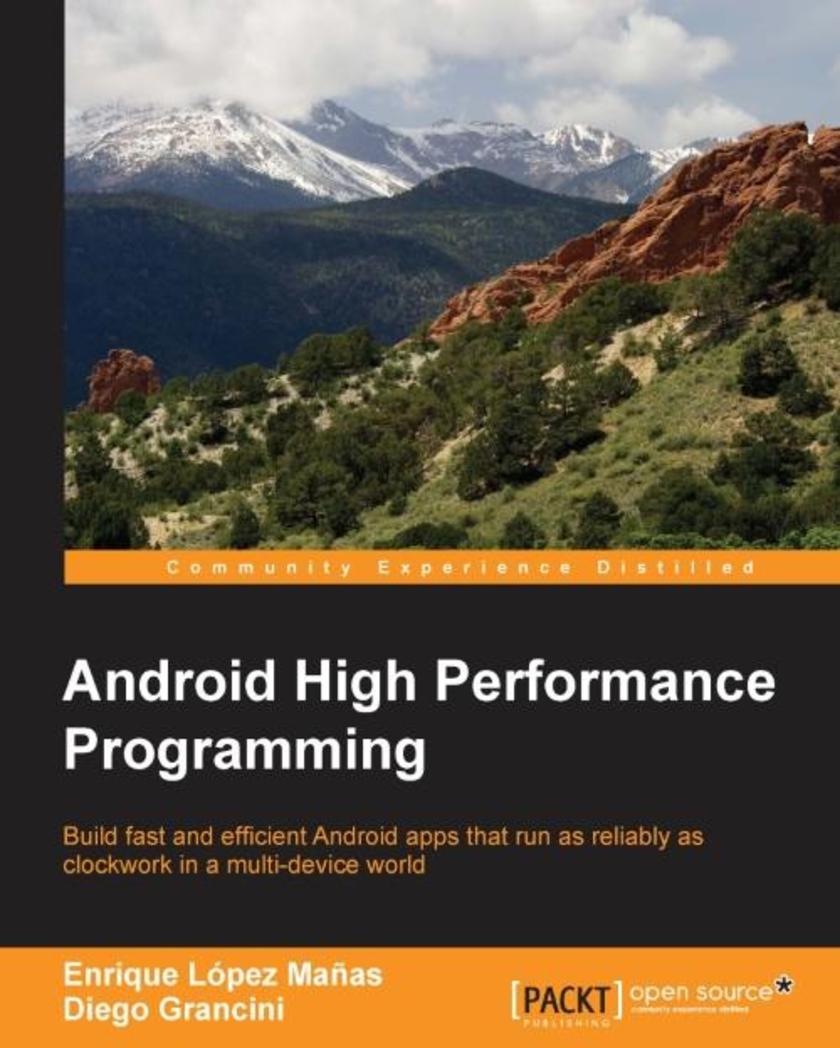
Android High Performance Programming
¥90.46
Build fast and efficient Android apps that run as reliably as clockwork in a multi-device world About This Book . Wide coverage of various topics that help in developing optimal applications . Explore the concepts of Advanced Native Coding in depth . A must-have for professional-standard Android developers for whom performance failures and the sloppy use of resources are simply unacceptable Who This Book Is For This book is aimed at developers with an advanced knowledge of Android and who want to test their skills and learn new techniques to increase the performance of their applications. We assume they are comfortable working with the entire Android SDK, and have been doing it for a few years. They need to be familiar with frameworks such as NDK to use native code, which is crucial for app performance What You Will Learn . Create Android applications that squeeze the most from the limited resource capacity of devices . Swap code that isn’t performing . Efficient memory management by identifying problems such as leaks . Reap the benefits of multithreaded and asynchronous programming . Maximize the security and encryption mechanisms natively provided by Android . Perform efficient network operations and techniques to retrieve data from servers . Master the NDK to write native code that can perform faster operations In Detail Performant applications are one of the key drivers of success in the mobile world. Users may abandon an app if it runs slowly. Learning how to build applications that balance speed and performance with functionality and UX can be a challenge; however, it's now more important than ever to get that balance right. Android High Performance will start you thinking about how to wring the most from any hardware your app is installed on, so you can increase your reach and engagement. The book begins by providing an introduction to state–of-the-art Android techniques and the importance of performance in an Android application. Then, we will explain the Android SDK tools regularly used to debug and profile Android applications. We will also learn about some advanced topics such as building layouts, multithreading, networking, and security. Battery life is one of the biggest bottlenecks in applications; and this book will show typical examples of code that exhausts battery life, how to prevent this, and how to measure battery consumption from an application in every kind of situation to ensure your apps don’t drain more than they should. This book explains techniques for building optimized and efficient systems that do not drain the battery, cause memory leaks, or slow down with time. Style and approach The book follows a tutorial-based approach to take the reader from the basic fundamentals of debugging to advanced performance-improvement concepts.
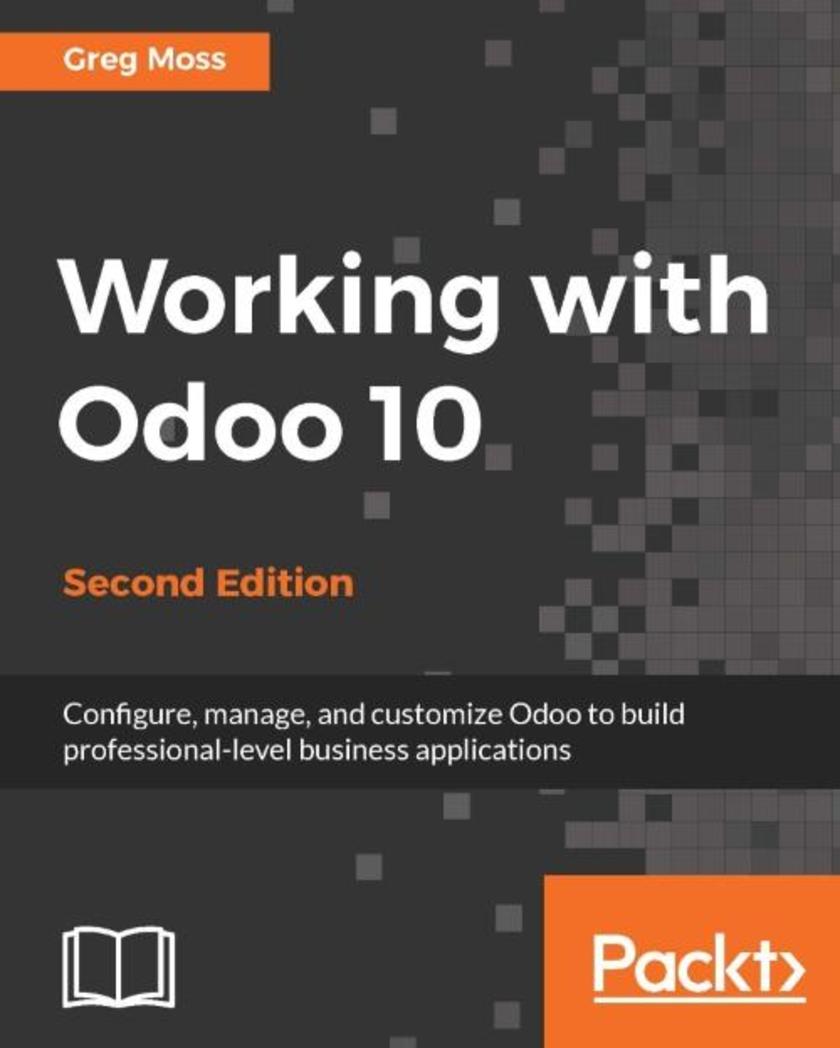
Working with Odoo 10 - Second Edition
¥90.46
Configure, manage, and customize Odoo to build professional-level business applications About This Book Build an Odoo module and integrate it with other platforms through this practical guide This book is the perfect companion to help you customize your Odoo installations for your enterprise requirements Use project management along with analytics for better reporting Who This Book Is For This book is for those who have not used Odoo before, allowing you to learn advanced-level features with Odoo such as creating your own custom modules. You do not need any knowledge of Odoo. What You Will Learn Configure a functioning customer relationship management system Set up a purchasing and receiving system Implement manufacturing operations and processes using real-world examples Discover the capabilities of Odoo's financial accounting and reporting features Integrate powerful human resource applications Utilize Odoo's project management application to organize tasks Customize Odoo without writing a line a code In Detail Odoo is a comprehensive set of open-source enterprise management applications. Now with Odoo 10, you have access to a powerful website builder, integrated e-commerce features, and a fast-growing community to help transform and modernize your business. You will start with how to set up Odoo online and on your own server. You’ll then configure the basic company settings required to quickly getting your first Odoo system up and running. Later you’ll explore Customer Relationship Management in Odoo and and their importance in today's modern business environment. Next we will deep dive into purchasing application with Odoo and learn some of the primary functionalities of ERP systems for manufacturing operations. You will then use analytic accounting to provide better reporting. Finally you will walk through the recent Odoo 10 features with respect to the community and enterprise edition giving you complete understanding of what Odoo can do for you no matter the reason! Style and approach This fast-paced, step-by-step guide will show you everything you need to know about the Odoo module ecosystem through practical and real-world examples.

NHibernate 4.x Cookbook - Second Edition
¥90.46
Over 90 incredible and powerful recipes to help you efficiently use NHibernate in your application About This Book · Master the full range of NHibernate features through detailed example recipes that you can quickly apply to your own applications· Reduce hours of application development time and get a better application architecture and improved performance· Create, maintain, and update your database structure automatically with the help of NHibernate Who This Book Is For This book is written for .NET developers who want to use NHibernate and those who want to deepen their knowledge of the platform. Examples are written in C# and XML. Some basic knowledge of SQL is assumed. If you build .NET applications that use relational databases, this book is for you. What You Will Learn · Create a persistent object model to move data in and out of your database· Build the database from your model automatically· Configure NHibernate for use with WebForms, MVC, WPF, and WinForms applications· Create database queries using a variety of methods· Improve the performance of your applications using a variety of techniques· Build an infrastructure for fast, easy, test-driven development of your data access layer· Implement entity validation, auditing, full-text search, horizontal partitioning (sharding), and spatial queries using NHibernate Contrib projects In Detail NHibernate is a mature, flexible, scalable, and feature-complete open source project for data access. Although it sounds like an easy task to build and maintain database applications, it can be challenging to get beyond the basics and develop applications that meet your needs perfectly. NHibernate allows you to use plain SQL and stored procedures less and keep focus on your application logic instead. Learning the best practices for a NHibernate-based application will help you avoid problems and ensure that your project is a success. The book will take you from the absolute basics of NHibernate through to its most advanced features, showing you how to take full advantage of each concept to quickly create amazing database applications. You will learn several techniques for each of the four core NHibernate tasks—configuration, mapping, session and transaction management, and querying—and which techniques fit best with various types of applications. In short, you will be able to build an application using NHibernate by the end of the book. You will also learn how to best implement enterprise application architecture patterns using NHibernate, leading to clean, easy-to-understand code and increased productivity. In addition to new features, you will learn creative ways to extend the NHibernate core, as well as gaining techniques to work with the NHibernate search, shards, spatial, envers, and validation projects. Style and approach This book contains recipes with examples organized in functional areas, each containing step-by-step instructions on everything necessary to execute a particular task. The book is designed so you can read it from start to end or just open up any chapter and start following the recipes.
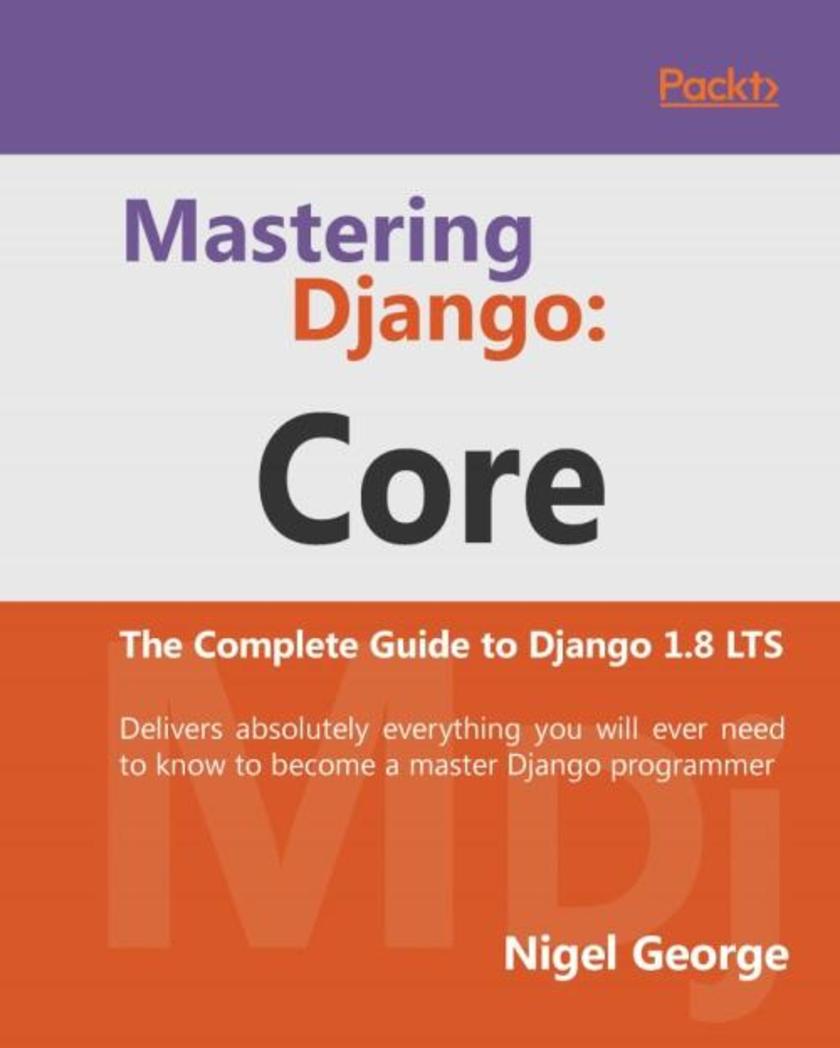
Mastering Django: Core
¥90.46
Delivers absolutely everything you will ever need to know to become a master Django programmer About This Book Gain a complete understanding of Django—the most popular, Python-based web framework in the world Gain the skills to successfully designing, developing, and deploying your app This book is packaged with fully described code so you can learn the fundamentals and the advanced topics to get a complete understanding of all of Django’s core functions Who This Book Is For This book assumes you have a basic understanding of the Internet and programming. Experience with Python or Django would be an advantage, but is not necessary. It is ideal for beginner to intermediate programmers looking for a fast, secure, scalable, and maintainable alternative web development platform to those based on PHP, Java, and dotNET. What You Will Learn Use Django to access user-submitted form data, validate it, and work with it Get to know advanced URLconf tips and tricks Extend Django’s template system with custom code Define models and use the database API to create, retrieve, update, and delete records Fully extend and customize the default implementation as per your project’s needs Test and deploy your Django application Get to know more about Django’s session, cache Framework, and middleware In Detail Mastering Django: Core is a completely revised and updated version of the original Django Book, written by Adrian Holovaty and Jacob Kaplan-Moss - the creators of Django. The main goal of this book is to make you a Django expert. By reading this book, you’ll learn the skills needed to develop powerful websites quickly, with code that is clean and easy to maintain. This book is also a programmer’s manual that provides complete coverage of the current Long Term Support (LTS) version of Django. For developers creating applications for commercial and business critical deployments, Mastering Django: Core provides a complete, up-to-date resource for Django 1.8LTS with a stable code-base, security fixes and support out to 2018. Style and approach This comprehensive step-by-step practical guide offers a thorough understanding of all the web development concepts related to Django. In addition to explaining the features of Django, this book provides real-world experience on how these features fit together to build extraordinary apps.
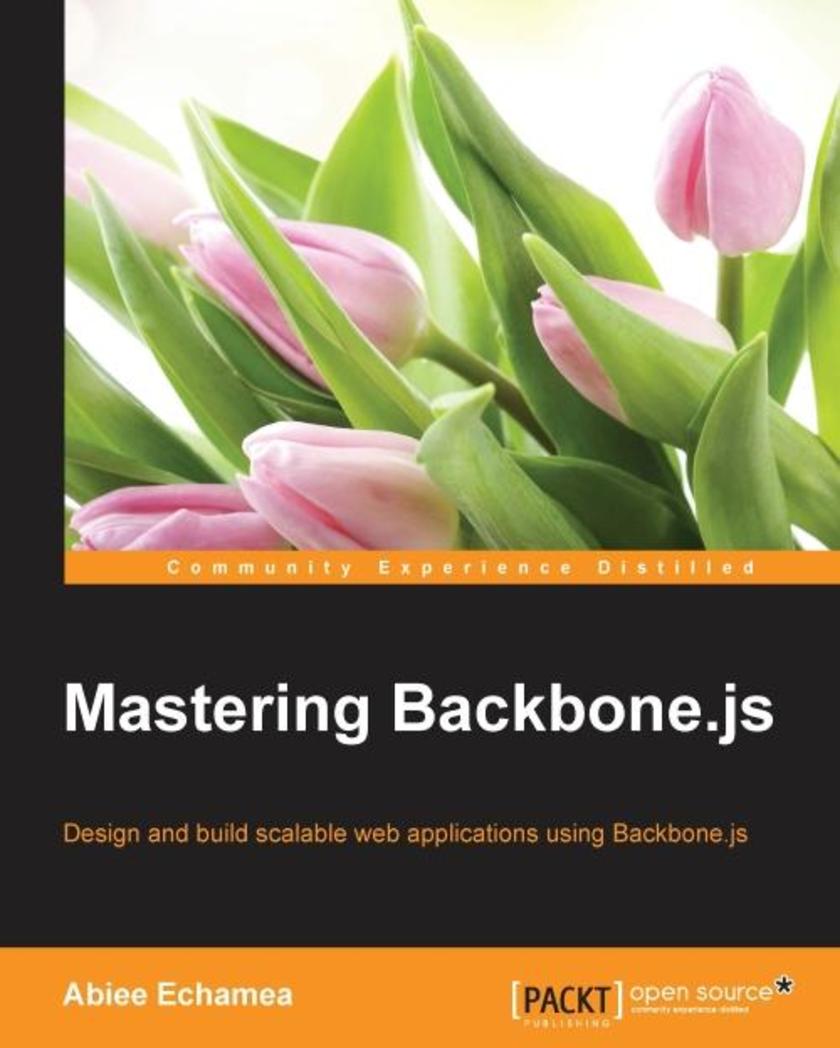
Mastering Backbone.js
¥90.46
Design and build scalable web applications using Backbone.jsAbout This BookLevel up your Backbone.js skills and create professional web applications with the best practicesUse the Backbone.js components in the right way and avoid maintenance nightmaresImprove your development workflow from application design to deploymentApply the best practices given in this tutorial to solve day-to-day problems in your applicationsWho This Book Is ForThis book is for those developers who know the basic concepts of Backbone.js and want to build scalable applications with it. If you are looking for the best practices of using Backbone.js applied to real work applications, this book is for you. You will be able to apply architectural principles to create amazing web applications easily.What You Will LearnBuild web applications that scale with Backbone.jsDesign a powerful architecture that eliminates maintenance nightmaresUse common patterns and best practices in Backbone.js web applications developmentsPack your applications to be deployed to production environmentsClean up your code organization to a simple and maintainable architectureTest your components and get confidence with your codeDeal with common scenarios like file uploading and login issuesIn DetailBackbone.js is a popular library to build single page applications used by many start-ups around the world because of its flexibility, robustness and simplicity. It allows you to bring your own tools and libraries to make amazing webapps with your own rules. However, due to its flexibility it is not always easy to create scalable applications with it. By learning the best practices and project organization you will be able to create maintainable and scalable web applications with Backbone.js.With this book you will start right from organizing your Backbone.js application to learn where to put each module and how to wire them. From organizing your code in a logical and physical way, you will go on to delimit view responsibilities and work with complex layouts.Synchronizing models in a two-way binding can be difficult and with sub resources attached it can be even worse. The next chapter will explain strategies for how to deal with these models. The following chapters will help you to manage module dependencies on your projects, explore strategies to upload files to a RESTful API and store information directly in the browser for using it with Backbone.js. After testing your application, you are ready to deploy it to your production environment. The final chapter will cover different flavors of authorization.The Backbone.js library can be difficult to master, but in this book you will get the necessary skill set to create applications with it, and you will be able to use any other library you want in your stack.Style and approachThis book takes a tutorial approach to help you scale your Backbone.js applications. It builds a web application using the best practices and applies architectural design principles to develop maintainable web-apps. Each chapter explains the design decisions and improves the project that is used as an example alongside the book.

Web Development with Django Cookbook - Second Edition
¥90.46
Over 70 practical recipes to help you create scalable websites using the Django 1.8 frameworkAbout This BookThis is the latest book on the market that will help you take advantage of the new features added to Django 1.8This book consists of recipes of varying complexities to help you create multilingual, responsive, and scalable websites with DjangoThis updated edition teaches you major Django functions and will help you improve your skills by developing models, forms, views, and templatesWho This Book Is ForThis book is for intermediate-level and professional Django users who need to build projects that are multilingual, functional on devices of different screen sizes, and that scale over a period of time. If you have created websites with Django but you want to sharpen your knowledge and learn some good approaches to different aspects of web development, you should definitely read this book.What You Will LearnGet started with the basic configuration necessary to start any Django projectBuild a database structure out of reusable model mixinsManage forms and views and get to know some useful patterns that are used to create themCreate handy template filters and tags that you can reuse in every projectIntegrate your own functionality into the Django CMSManage hierarchical structures with MPTTImport data from local sources and external web services as well as exporting your data to third partiesImplement a multilingual search with HaystackTest and deploy your project efficientlyIn DetailDjango is a web framework that was designed to strike a balance between rapid web development and high performance. It has the capacity to handle applications with high levels of user traffic and interaction, and can integrate with massive databases on the backend, constantly collecting and processing data in real time.Through this book, you'll discover that collecting data from different sources and providing it to others in different formats isn't as difficult as you thought. It follows a task-based approach to guide you through all the web development processes using the Django framework. We’ll start by setting up the virtual environment for a Django project and configuring it. Then you’ll learn to write reusable pieces of code for your models and find out how to manage database schema changes using South migrations. After that, we’ll take you through working with forms and views to enter and list data. With practical examples on using templates and JavaScript together, you will discover how to create the best user experience. In the final chapters, you'll be introduced to some programming and debugging tricks and finally, you will be shown how to test and deploy the project to a remote dedicated server.By the end of this book, you will have a good understanding of the new features added to Django 1.8 and be an expert at web development processes.Style and approachEvery chapter consists of practical examples and a mix of basic and advanced recipes that will guide you through the entire web development process, starting from project configuration and taking you right through to deployment.
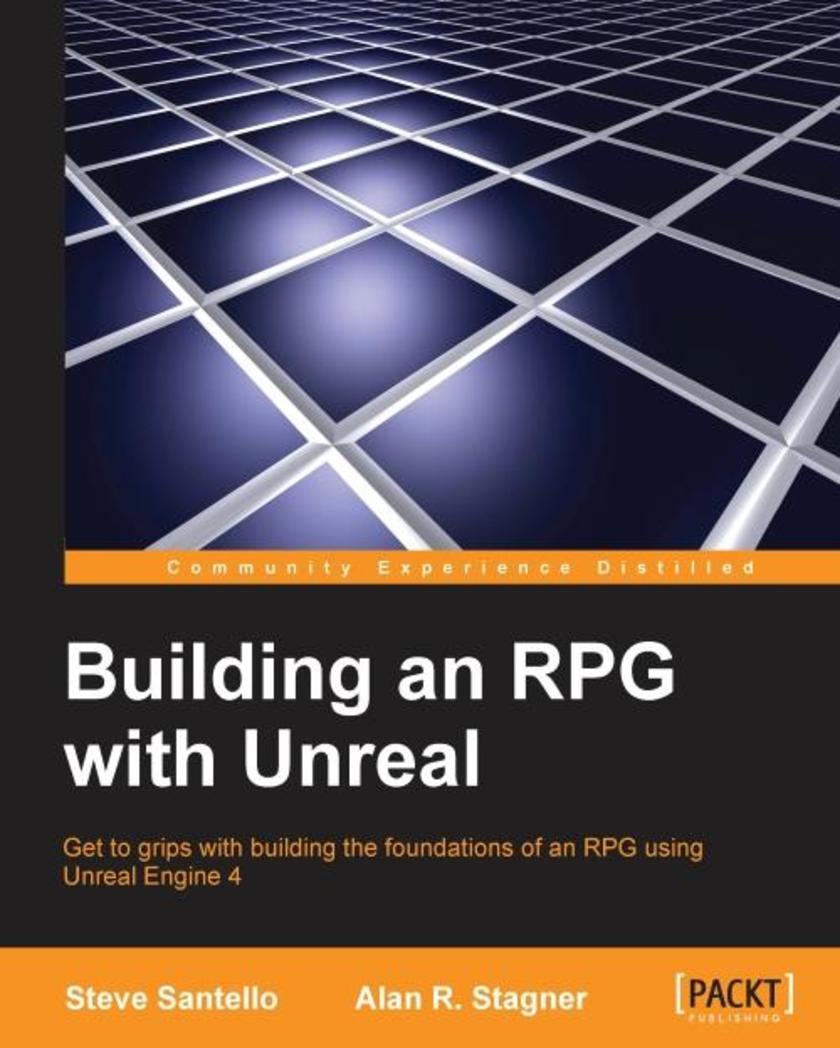
Building an RPG with Unreal
¥90.46
Get to grips with building the foundations of an RPG using Unreal Engine 4About This BookUtilize a mixture of C++, Blueprints, and UMG to create a role playing game (RPG) efficientlyCreate reusable code chunks and elements that can easily be integrated into other gamesA cost effective, step-by-step guide to building and customizing an entire framework for your RPGWho This Book Is ForIf you are new to Unreal Engine and always wanted to * an RPG, you are this book’s target reader. The lessons assume you understand the conventions of RPG games and have some awareness of the basics of using the Unreal editor to build level.What You Will LearnProgram gameplay elements in C++ in UnrealCreate custom game data for entities such as players and enemiesCreate a turn-based combat engineDesign menu systems and blueprint logicCreate an NPC and dialog systemIntegrate equipment and itemsDevelop the foundations of a saving and loading systemIn DetailNow that Unreal Engine 4 has become one of the most cutting edge game engines in the world, developers are looking for the best ways of creating games of any genre in the engine. This book will lay out the foundation of creating a turn-based RPG in Unreal Engine 4.The book starts by walking you through creating a turn-based battle system that can hold commands for party members and enemies. You’ll get your hands dirty by creating NPCs such as shop owners, and important mechanics, that make up every RPG such as a currency system, inventory, dialogue, and character statistics. Although this book specifically focuses on the creation of a turn-based RPG, there are a variety of topics that can be utilized when creating many other types of genres.By the end of the book, you will be able to build upon core RPG framework elements to create your own game experience.Style and approachYou will follow a series of lessons detailing the elements that contribute to an RPG. By the end of the book, you will have considerably leveled up your ability to make your own game
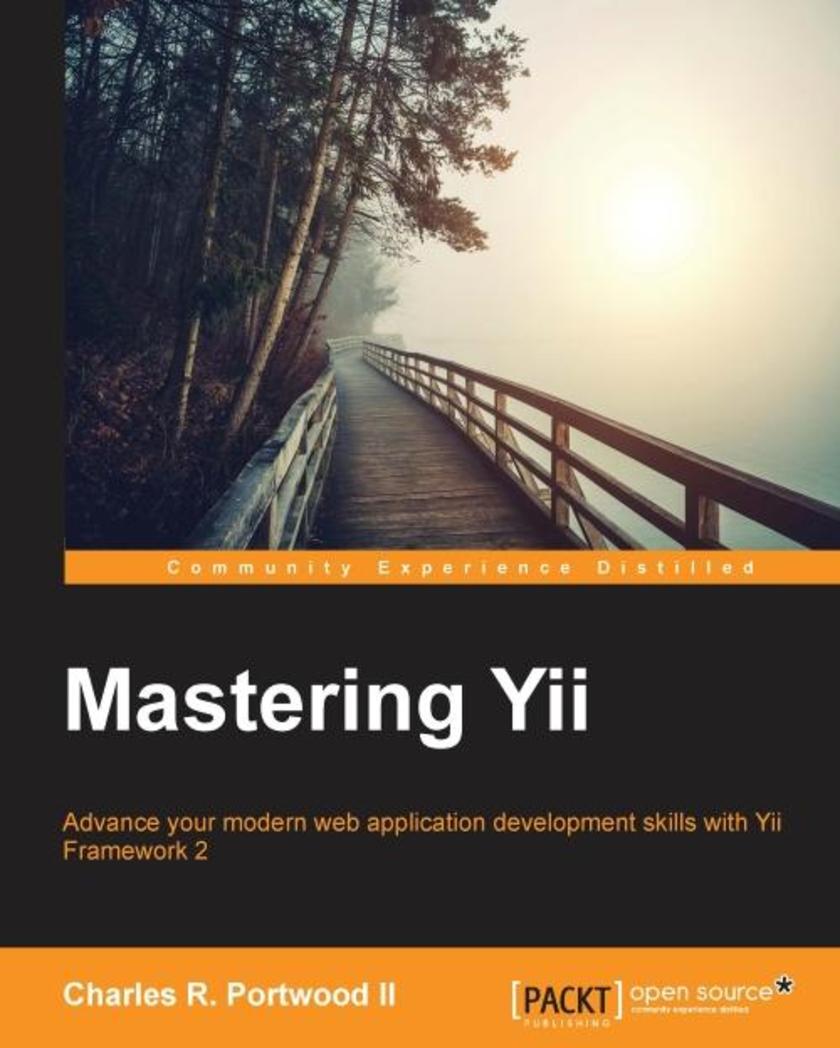
Mastering Yii
¥90.46
Advance your modern web application development skills with Yii Framework 2About This BookLearn to work with the key aspects of Yii Framework 2Explore how to create RESTful APIs with YiiIncorporate codeception with Yii2 to test your code thoroughlyWho This Book Is ForThis book is for Yii Framework developers who want to quickly master Yii2. This book assumes some familiarity with Yii2, PHP 5, and HTML5.What You Will LearnExplore Yii2’s conventions and learn how to properly configure Yii2Create both web and console applicationsReduce development time by learning to create classes automatically with Gii, Yii2’s automatic code generation toolUse Yii2’s database migration toolManage and access databases with Active Record, DAO, and Query BuilderHandle user authentication and authorization within Yii2Create RESTful APIs with Yii Framework 2Test applications automatically with codeceptionIn DetailThe successor of Yii Framework 1.1, Yii2 is a complete rewrite of Yii Framework, one of the most popular PHP 5 frameworks for making modern web applications. The update embraces the best practices and protocols established with newer versions of PHP, while still maintaining the simple, fast, and extendable behavior found in its predecessor.This book has been written to enhance your skills and knowledge with Yii Framework 2. Starting with configuration and how to initialize new projects, you’ll learn how to configure, manage, and use every aspect of Yii2 from Gii, DAO, Query Builder, Active Record, and migrations, to asset manager. You'll also discover how to automatically test your code using codeception.With this book by your side, you’ll have all the skills you need to quickly create rich modern web and console applications with Yii2.Style and approach This book is a step-by-step guide to mastering every aspect of Yii Framework 2. Each chapter outlines a new set of tools along with code that can be used to efficiently create modern web and console applications
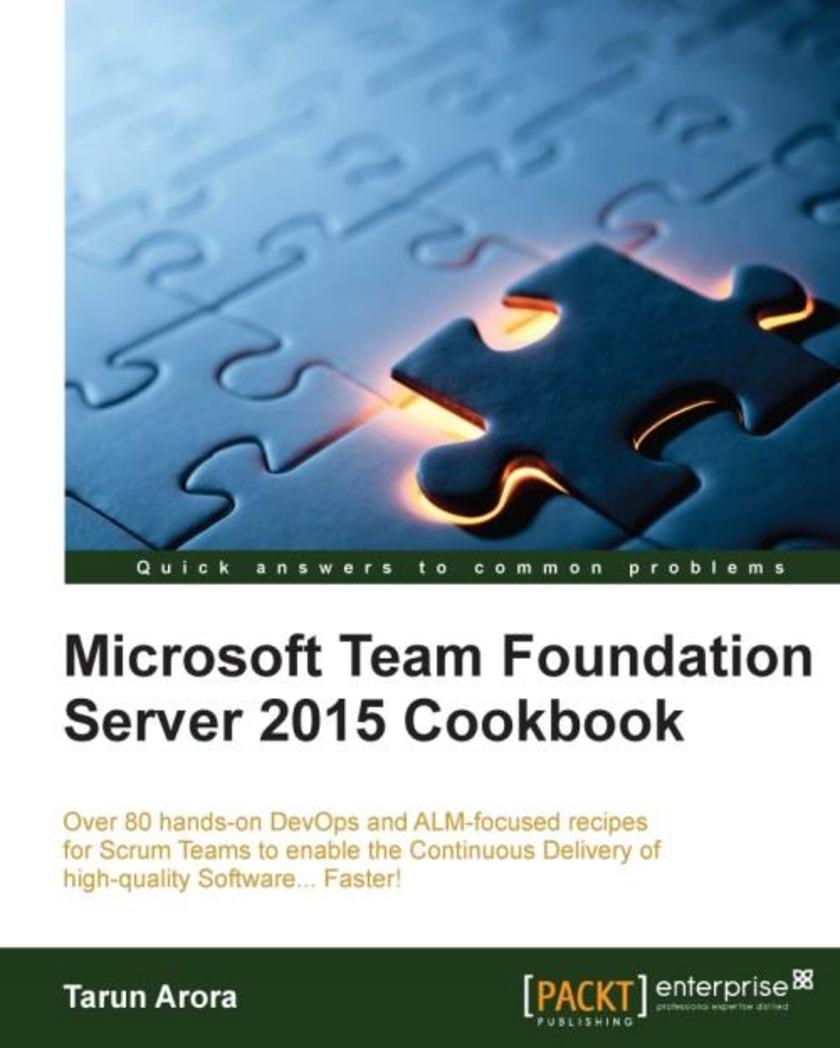
Microsoft Team Foundation Server 2015 Cookbook
¥90.46
Over 80 hands-on DevOps and ALM-focused recipes for Scrum Teams to enable the Continuous Delivery of high-quality Software... Faster!About This BookRelease high quality, reliable software quickly through building, testing, and deployment automationImprove the predictability, reliability, and availability of TFS in your organization by scheduling administration and maintenance activitiesExtend, customize, and integrate tools with TFS, enabling your teams to manage their application lifecycles effectivelyWho This Book Is ForThis book is aimed at software professionals including Developers, Testers, Architects, Configuration Analysts, and Release Managers who want to understand the capabilities of TFS to deliver better quality software faster.A working setup of TFS 2015 and some familiarity with the concepts of software life cycle management is assumed.What You Will LearnCreating a Team Project with Dashboards, Assigning License, Adding users, and Auditing AccessSetting up a Git repository in an existing TFVC-based Team ProjectSetting up branch policies and conducting Pull requests with code reviewsMapping, assigning and tracking work items shared by multiple teamsSetting up and customizing Backlogs, Kanban board, Sprint Taskboard, and dashboardsCreating a Continuous Integration, Continuous Build, and Release PipelineIntegrating SonarQube with TFBuild to manage Technical DebtTriggering Selenium Web Tests on a Selenium Test Grid using TFBuildUsing Visual Studio Team Services Cloud load testing capability with new Build frameworkExtending and customizing the capabilities of Team Foundation Server using API and Process EditorIn DetailTeam Foundation Server (TFS) allows you to manage code repositories, build processes, test infrastructure, and deploy labs. TFS supports your team, enabling you to connect, collaborate, and deliver on time. Microsoft's approach to Application Lifecycle Management (ALM) provides a flexible and agile environment that adapts to the needs of your team, removes barriers between roles, and streamlines processes.The book introduces you to creating and setting up team projects for scrum teams. You'll explore various source control repositories, branching, and merging activities, along with a demonstration of how to embed quality into every code check-in. Then, you'll discover agile project planning and management tools. Later, emphasis is given to the testing and release management features of TFS which facilitate the automation of the release pipeline in order to create potentially shippable increments.By the end of the book, you'll have learned to extend and customize TFS plugins to incorporate them into other platforms and enable teams to manage the software lifecycle effectively.Style and approachThis book is a recipe-based guide that uses a problem-solution format to call out inefficiencies in the software development lifecycle and then guides you, step-by-step, on how you can use Team Foundation Server to your advantage in those areas.
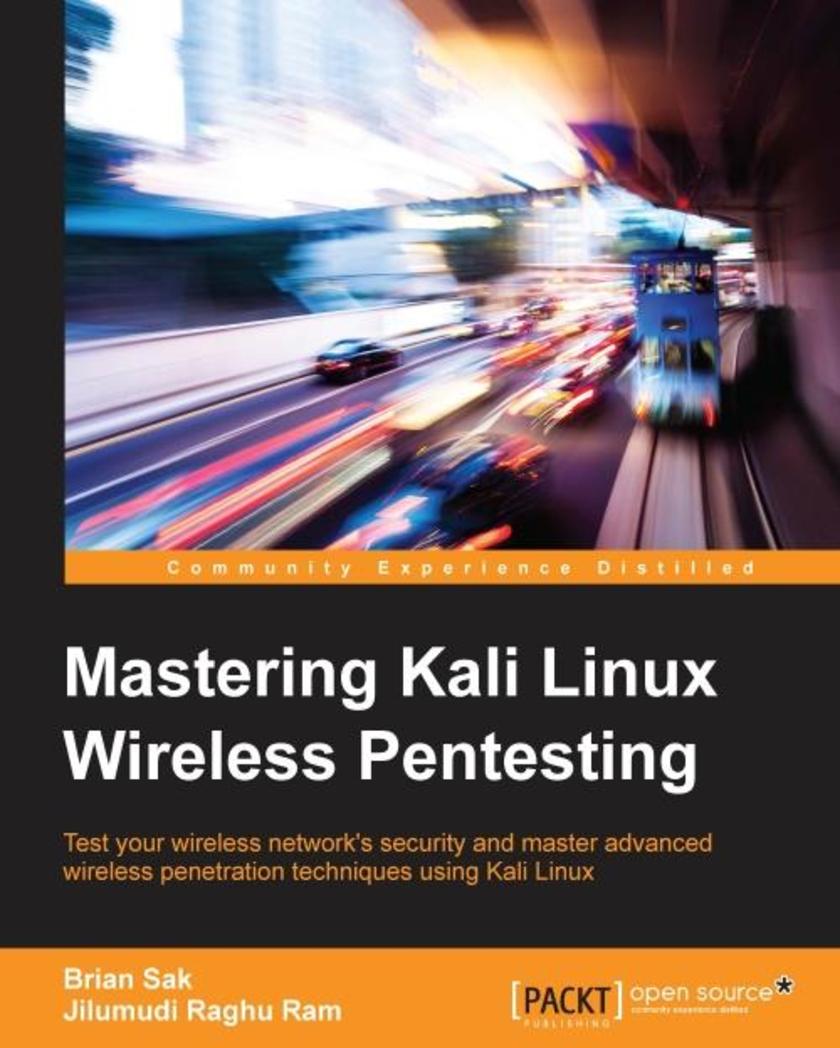
Mastering Kali Linux Wireless Pentesting
¥90.46
Test your wireless network’s security and master advanced wireless penetration techniques using Kali LinuxAbout This BookDevelop your skills using attacks such as wireless cracking, Man-in-the-Middle, and Denial of Service (DOS), as well as extracting sensitive information from wireless networksPerform advanced wireless assessment and penetration testsUse Embedded Platforms, Raspberry PI, and Android in wireless penetration testing with Kali LinuxWho This Book Is ForIf you are an intermediate-level wireless security consultant in Kali Linux and want to be the go-to person for Kali Linux wireless security in your organisation, then this is the book for you. Basic understanding of the core Kali Linux concepts is expected.What You Will LearnFingerprint wireless networks with the various tools available in Kali LinuxLearn various techniques to exploit wireless access points using CSRFCrack WPA/WPA2/WPS and crack wireless encryption using Rainbow tables more quicklyPerform man-in-the-middle attack on wireless clientsUnderstand client-side attacks, browser exploits, Java vulnerabilities, and social engineeringDevelop advanced sniffing and PCAP analysis skills to extract sensitive information such as DOC, XLS, and PDF documents from wireless networksUse Raspberry PI and OpenWrt to perform advanced wireless attacksPerform a DOS test using various techniques and toolsIn DetailKali Linux is a Debian-based Linux distribution designed for digital forensics and penetration testing. It gives access to a large collection of security-related tools for professional security testing - some of the major ones being Nmap, Aircrack-ng, Wireshark, and Metasploit.This book will take you on a journey where you will learn to master advanced tools and techniques to conduct wireless penetration testing with Kali Linux.You will begin by gaining an understanding of setting up and optimizing your penetration testing environment for wireless assessments. Then, the book will take you through a typical assessment from reconnaissance, information gathering, and scanning the network through exploitation and data extraction from your target. You will get to know various ways to compromise the wireless network using browser exploits, vulnerabilities in firmware, web-based attacks, client-side exploits, and many other hacking methods. You will also discover how to crack wireless networks with speed, perform man-in-the-middle and DOS attacks, and use Raspberry Pi and Android to expand your assessment methodology.By the end of this book, you will have mastered using Kali Linux for wireless security assessments and become a more effective penetration tester and consultant.Style and approachThis book uses a step-by-step approach using real-world attack scenarios to help you master the wireless penetration testing techniques.
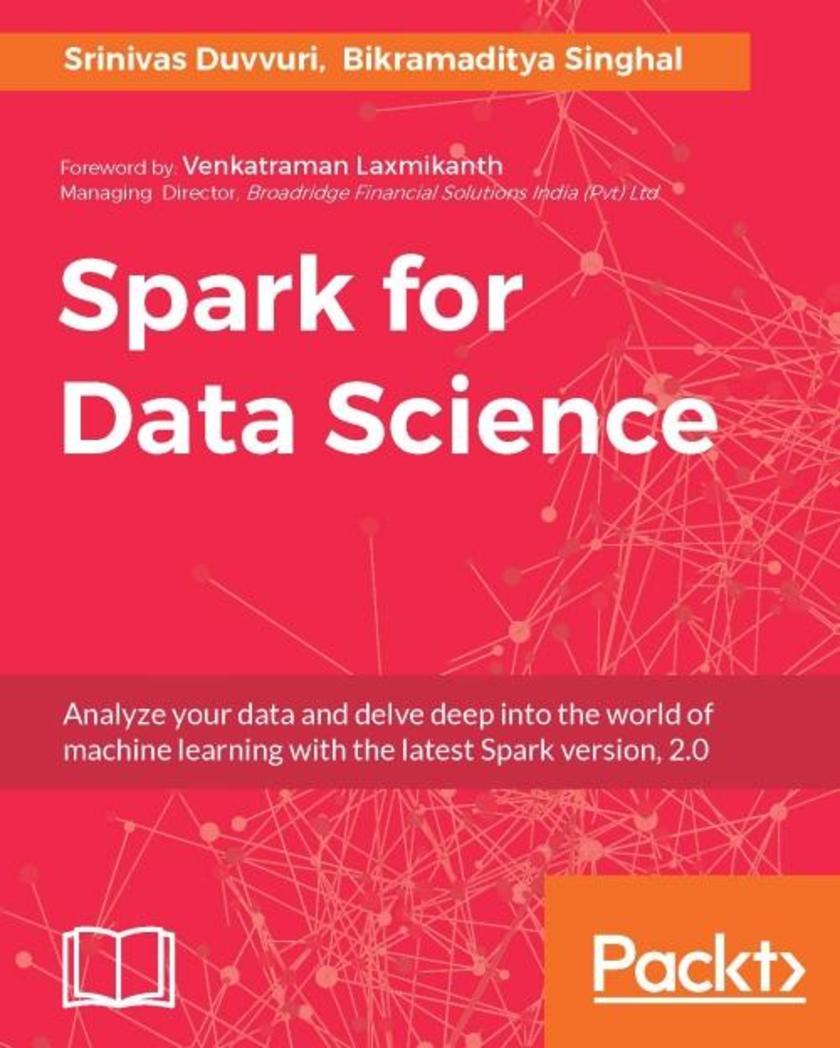
Spark for Data Science
¥90.46
Analyze your data and delve deep into the world of machine learning with the latest Spark version, 2.0 About This Book Perform data analysis and build predictive models on huge datasets that leverage Apache Spark Learn to integrate data science algorithms and techniques with the fast and scalable computing features of Spark to address big data challenges Work through practical examples on real-world problems with sample code snippets Who This Book Is For This book is for anyone who wants to leverage Apache Spark for data science and machine learning. If you are a technologist who wants to expand your knowledge to perform data science operations in Spark, or a data scientist who wants to understand how algorithms are implemented in Spark, or a newbie with minimal development experience who wants to learn about Big Data Analytics, this book is for you! What You Will Learn Consolidate, clean, and transform your data acquired from various data sources Perform statistical analysis of data to find hidden insights Explore graphical techniques to see what your data looks like Use machine learning techniques to build predictive models Build scalable data products and solutions Start programming using the RDD, DataFrame and Dataset APIs Become an expert by improving your data analytical skills In Detail This is the era of Big Data. The words ‘Big Data’ implies big innovation and enables a competitive advantage for businesses. Apache Spark was designed to perform Big Data analytics at scale, and so Spark is equipped with the necessary algorithms and supports multiple programming languages. Whether you are a technologist, a data scientist, or a beginner to Big Data analytics, this book will provide you with all the skills necessary to perform statistical data analysis, data visualization, predictive modeling, and build scalable data products or solutions using Python, Scala, and R. With ample case studies and real-world examples, Spark for Data Science will help you ensure the successful execution of your data science projects. Style and approach This book takes a step-by-step approach to statistical analysis and machine learning, and is explained in a conversational and easy-to-follow style. Each topic is explained sequentially with a focus on the fundamentals as well as the advanced concepts of algorithms and techniques. Real-world examples with sample code snippets are also included.
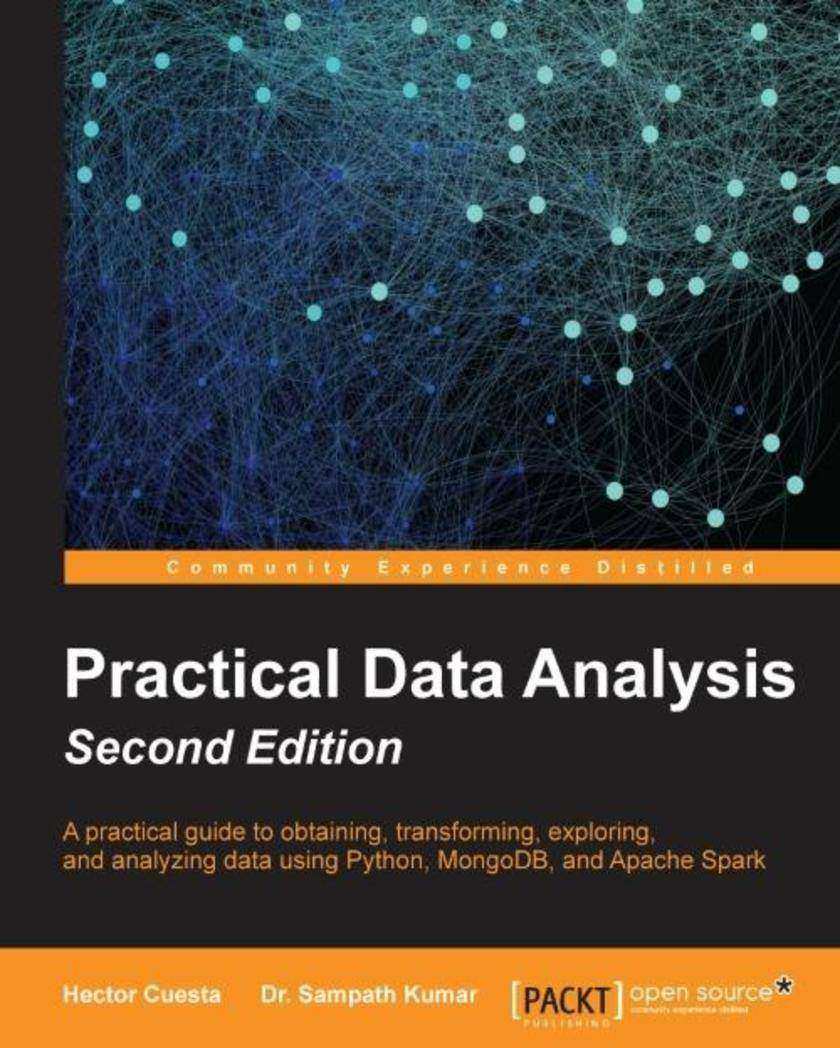
Practical Data Analysis - Second Edition
¥90.46
A practical guide to obtaining, transforming, exploring, and analyzing data using Python, MongoDB, and Apache Spark About This Book Learn to use various data analysis tools and algorithms to classify, cluster, visualize, simulate, and forecast your data Apply Machine Learning algorithms to different kinds of data such as social networks, time series, and images A hands-on guide to understanding the nature of data and how to turn it into insight Who This Book Is For This book is for developers who want to implement data analysis and data-driven algorithms in a practical way. It is also suitable for those without a background in data analysis or data processing. Basic knowledge of Python programming, statistics, and linear algebra is assumed. What You Will Learn Acquire, format, and visualize your data Build an image-similarity search engine Generate meaningful visualizations anyone can understand Get started with analyzing social network graphs Find out how to implement sentiment text analysis Install data analysis tools such as Pandas, MongoDB, and Apache Spark Get to grips with Apache Spark Implement machine learning algorithms such as classification or forecasting In Detail Beyond buzzwords like Big Data or Data Science, there are a great opportunities to innovate in many businesses using data analysis to get data-driven products. Data analysis involves asking many questions about data in order to discover insights and generate value for a product or a service. This book explains the basic data algorithms without the theoretical jargon, and you’ll get hands-on turning data into insights using machine learning techniques. We will perform data-driven innovation processing for several types of data such as text, Images, social network graphs, documents, and time series, showing you how to implement large data processing with MongoDB and Apache Spark. Style and approach This is a hands-on guide to data analysis and data processing. The concrete examples are explained with simple code and accessible data.

Mastering QlikView Data Visualization
¥90.46
Take your QlikView skills to the next level and master the art of creating visual data analysis for real business needs About This Book Explore how to create your own QlikView data laboratory and how to develop QlikView applications using agile project methods Implement advanced data visualization and analysis for common business requirements from the sales, finance, marketing, inventory, operations, and human resources departments Learn from real-life experience shared in this book that will give you the upper hand in your next QlikView project Who This Book Is For This book is intended for developers who want to go beyond their technical knowledge of QlikView and understand how to create analysis and data visualizations that solve real business needs. You should have a basic understanding of advanced QlikView functions. What You Will Learn Apply advanced QlikView techniques such as set analysis and nested aggregation in order to deliver common business requirements Understand real business requirements for sales, finance, marketing, and human resources departments Discover when to apply more advanced data visualization such as frequency polygons, bullet graphs, and XmR charts Go beyond native QlikView and include geographical analysis, planning, and sentiment analysis in your QlikView application Troubleshoot common errors we discover at the moment we visualize data in QlikView Develop a plan to master Qlik Sense data visualization In Detail Just because you know how to swing a hammer doesn't mean you know how to build a house. Now that you've learned how to use QlikView, it's time to learn how to develop meaningful QlikView applications that deliver what your business users need. You will explore the requirements and the data from several business departments in order to deliver the most amazing analysis and data visualizations. In doing so, you will practice using advanced QlikView functions, chart object property options, and extensions to solve real-world challenges. Style and approach This hands-on guide follows the story of a company implementing QlikView as its enterprise data discovery solution. Each chapter starts with an understanding of the business requirements and the data model, and then helps you create insightful analysis and data visualizations. Each chapter expands on what was done in the previous chapter as we follow this continuously improving iterative process.
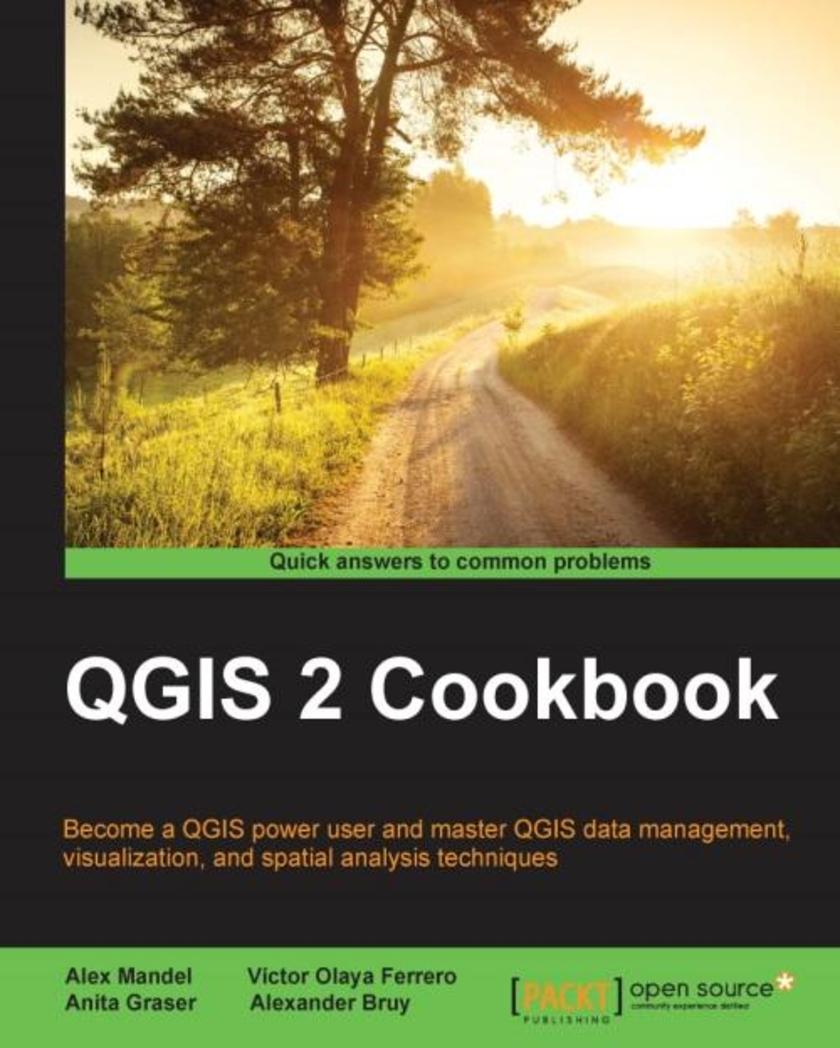
QGIS 2 Cookbook
¥90.46
Become a QGIS power user and master QGIS data management, visualization, and spatial analysis techniques About This Book Explore and create time-based visualizations and build interactive maps Maximize your use of the QGIS features, plugins and toolbox automation Packed with lots of sample datasets to enable a better understanding of the code Who This Book Is For If you are an intermediate GIS user, with either previous experience in QGIS or any other GIS application, this is the book for you. The recipes can be used to learn more advanced techniques in QGIS or to replicate the functionalities equivalent to other GIS platforms. This book assumes that you already have a working QGIS system in place. What You Will Learn Import and export common tricky spatial data formats Perform classic vector and raster analysis with QGIS Utilize spatial databases and data management tools Use and create geographic web services and maps Explore and create time-based visualizations Perform network building and routing analysis Extend QGIS capabilities with popular plugins and toolbox automation Make beautiful and unique maps with customized cartography In Detail QGIS is a user-friendly, cross-platform desktop geographic information system used to make maps and analyze spatial data. QGIS allows users to understand, question, interpret, and visualize spatial data in many ways that reveal relationships, patterns, and trends in the form of maps. This book is a collection of simple to advanced techniques that are needed in everyday geospatial work, and shows how to accomplish them with QGIS. You will begin by understanding the different types of data management techniques, as well as how data exploration works. You will then learn how to perform classic vector and raster analysis with QGIS, apart from creating time-based visualizations. Finally, you will learn how to create interactive and visually appealing maps with custom cartography. By the end of this book, you will have all the necessary knowledge to handle spatial data management, exploration, and visualization tasks in QGIS. Style and approach This book covers practical examples, with step-by-step instructions on how to use real world data covering common GIS operations and the different analysis techniques. It provides detailed explanations and applications of QGIS concepts that will allow the user to effectively analyze spatial data.
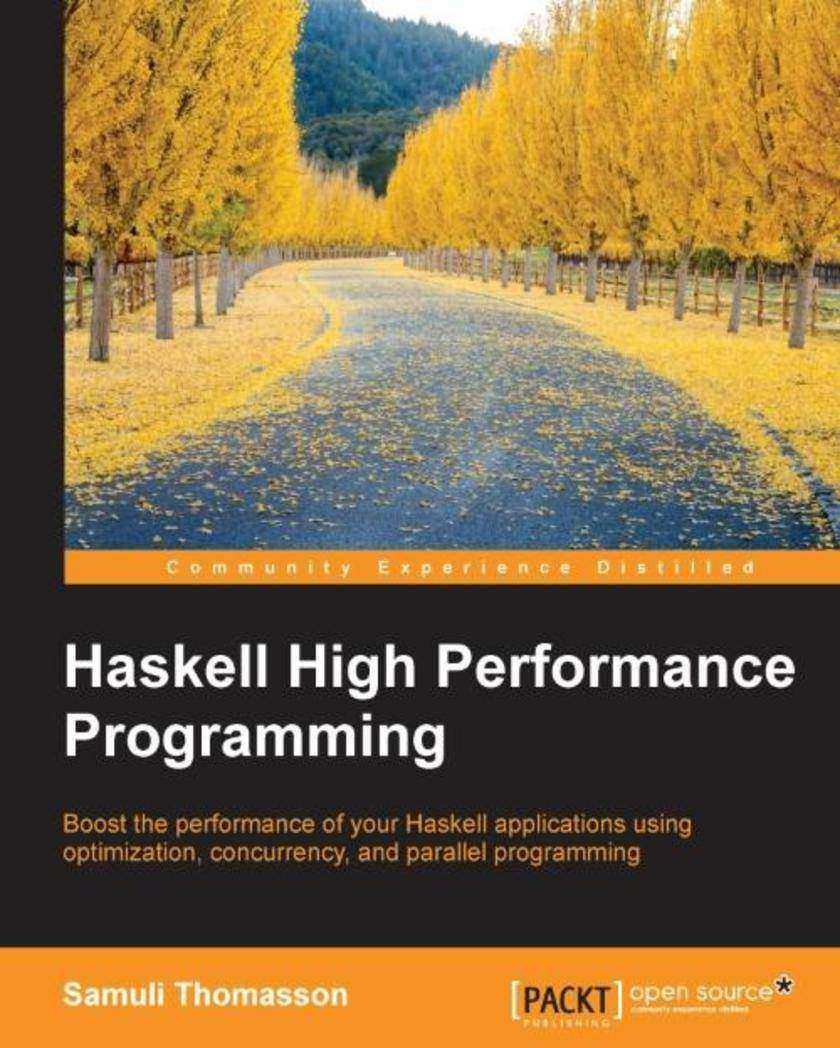
Haskell High Performance Programming
¥90.46
Boost the performance of your Haskell applications using optimization, concurrency, and parallel programming About This Book Explore the benefits of lazy evaluation, compiler features, and tools and libraries designed for high performance Write fast programs at extremely high levels of abstraction Work through practical examples that will help you address the challenges of writing efficient code Who This Book Is For To get the most out of this book, you need to have a working knowledge of reading and writing basic Haskell. No knowledge of performance, optimization, or concurrency is required. What You Will Learn Program idiomatic Haskell that's also surprisingly efficient Improve performance of your code with data parallelism, inlining, and strictness annotations Profile your programs to identify space leaks and missed opportunities for optimization Find out how to choose the most efficient data and control structures Optimize the Glasgow Haskell Compiler and runtime system for specific programs See how to smoothly drop to lower abstractions wherever necessary Execute programming for the GPU with Accelerate Implement programming to easily scale to the cloud with Cloud Haskell In Detail Haskell, with its power to optimize the code and its high performance, is a natural candidate for high performance programming. It is especially well suited to stacking abstractions high with a relatively low performance cost. This book addresses the challenges of writing efficient code with lazy evaluation and techniques often used to optimize the performance of Haskell programs. We open with an in-depth look at the evaluation of Haskell expressions and discuss optimization and benchmarking. You will learn to use parallelism and we'll explore the concept of streaming. We’ll demonstrate the benefits of running multithreaded and concurrent applications. Next we’ll guide you through various profiling tools that will help you identify performance issues in your program. We’ll end our journey by looking at GPGPU, Cloud and Functional Reactive Programming in Haskell. At the very end there is a catalogue of robust library recommendations with code samples. By the end of the book, you will be able to boost the performance of any app and prepare it to stand up to real-world punishment. Style and approach This easy-to-follow guide teaches new practices and techniques to optimize your code, and then moves towards more advanced ways to effectively write efficient Haskell code. Small and simple practical examples will help you test the concepts yourself, and you will be able to easily adapt them for any application.
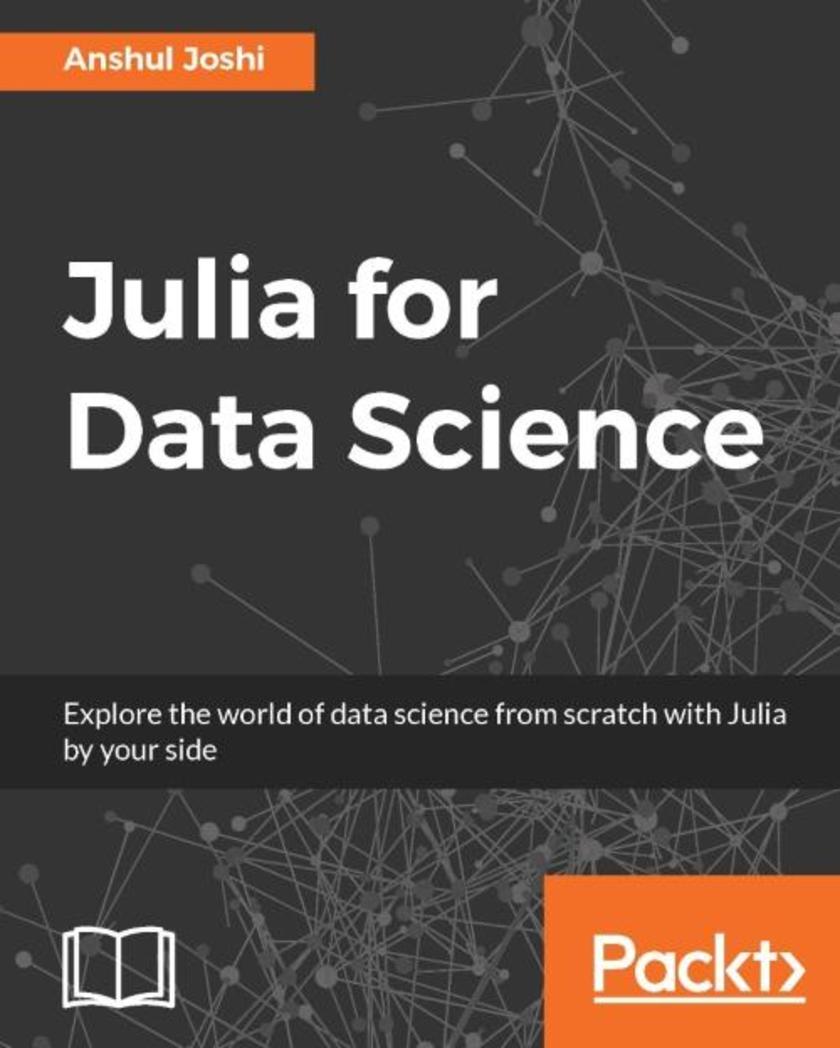
Julia for Data Science
¥90.46
Explore the world of data science from scratch with Julia by your side About This Book An in-depth exploration of Julia's growing ecosystem of packages Work with the most powerful open-source libraries for deep learning, data wrangling, and data visualization Learn about deep learning using Mocha.jl and give speed and high performance to data analysis on large data sets Who This Book Is For This book is aimed at data analysts and aspiring data scientists who have a basic knowledge of Julia or are completely new to it. The book also appeals to those competent in R and Python and wish to adopt Julia to improve their skills set in Data Science. It would be beneficial if the readers have a good background in statistics and computational mathematics. What You Will Learn Apply statistical models in Julia for data-driven decisions Understanding the process of data munging and data preparation using Julia Explore techniques to visualize data using Julia and D3 based packages Using Julia to create self-learning systems using cutting edge machine learning algorithms Create supervised and unsupervised machine learning systems using Julia. Also, explore ensemble models Build a recommendation engine in Julia Dive into Julia’s deep learning framework and build a system using Mocha.jl In Detail Julia is a fast and high performing language that's perfectly suited to data science with a mature package ecosystem and is now feature complete. It is a good tool for a data science practitioner. There was a famous post at Harvard Business Review that Data Scientist is the sexiest job of the 21st century. (https://hbr.org/2012/10/data-scientist-the-sexiest-job-of-the-21st-century). This book will help you get familiarised with Julia's rich ecosystem, which is continuously evolving, allowing you to stay on top of your game. This book contains the essentials of data science and gives a high-level overview of advanced statistics and techniques. You will dive in and will work on generating insights by performing inferential statistics, and will reveal hidden patterns and trends using data mining. This has the practical coverage of statistics and machine learning. You will develop knowledge to build statistical models and machine learning systems in Julia with attractive visualizations. You will then delve into the world of Deep learning in Julia and will understand the framework, Mocha.jl with which you can create artificial neural networks and implement deep learning. This book addresses the challenges of real-world data science problems, including data cleaning, data preparation, inferential statistics, statistical modeling, building high-performance machine learning systems and creating effective visualizations using Julia. Style and approach This practical and easy-to-follow yet comprehensive guide will get you learning about Julia with respect to data science. Each topic is explained thoroughly and placed in context. For the more inquisitive, we dive deeper into the language and its use case. This is the one true guide to working with Julia in data science.
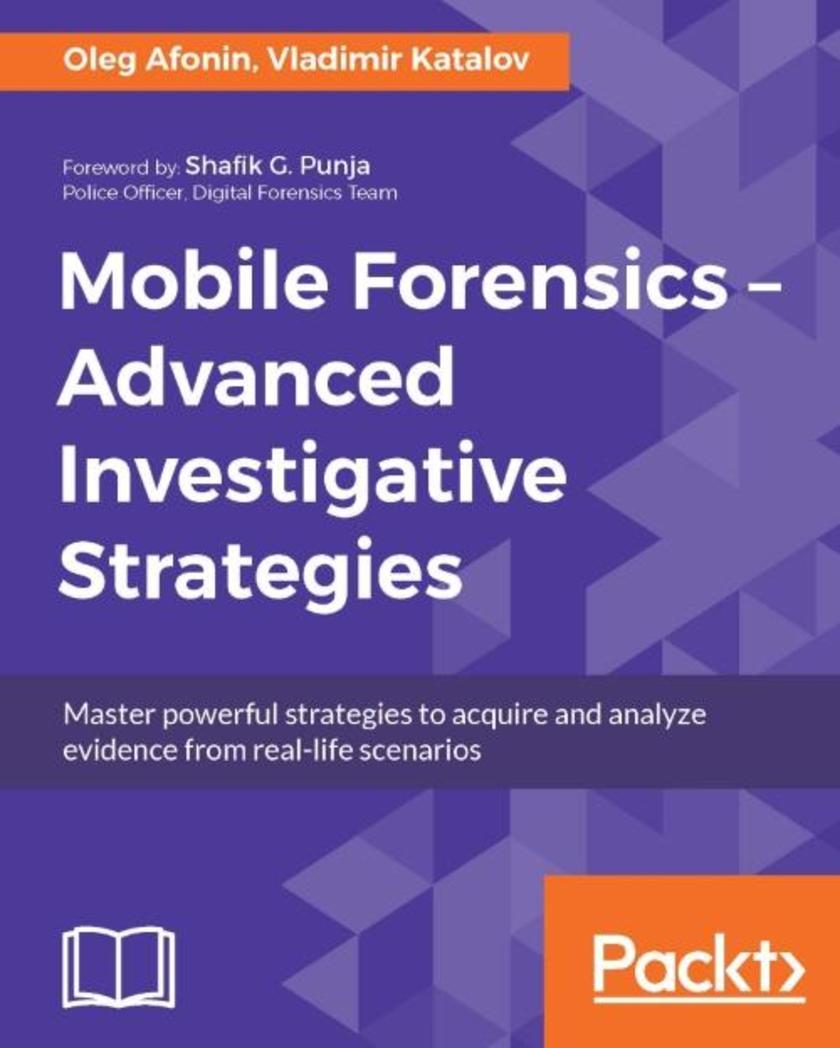
Mobile Forensics – Advanced Investigative Strategies
¥90.46
Master powerful strategies to acquire and analyze evidence from real-life scenarios About This Book A straightforward guide to address the roadblocks face when doing mobile forensics Simplify mobile forensics using the right mix of methods, techniques, and tools Get valuable advice to put you in the mindset of a forensic professional, regardless of your career level or experience Who This Book Is For This book is for forensic analysts and law enforcement and IT security officers who have to deal with digital evidence as part of their daily job. Some basic familiarity with digital forensics is assumed, but no experience with mobile forensics is required. What You Will Learn Understand the challenges of mobile forensics Grasp how to properly deal with digital evidence Explore the types of evidence available on iOS, Android, Windows, and BlackBerry mobile devices Know what forensic outcome to expect under given circumstances Deduce when and how to apply physical, logical, over-the-air, or low-level (advanced) acquisition methods Get in-depth knowledge of the different acquisition methods for all major mobile platforms Discover important mobile acquisition tools and techniques for all of the major platforms In Detail Investigating digital media is impossible without forensic tools. Dealing with complex forensic problems requires the use of dedicated tools, and even more importantly, the right strategies. In this book, you’ll learn strategies and methods to deal with information stored on smartphones and tablets and see how to put the right tools to work. We begin by helping you understand the concept of mobile devices as a source of valuable evidence. Throughout this book, you will explore strategies and "plays" and decide when to use each technique. We cover important techniques such as seizing techniques to shield the device, and acquisition techniques including physical acquisition (via a USB connection), logical acquisition via data backups, over-the-air acquisition. We also explore cloud analysis, evidence discovery and data analysis, tools for mobile forensics, and tools to help you discover and analyze evidence. By the end of the book, you will have a better understanding of the tools and methods used to deal with the challenges of acquiring, preserving, and extracting evidence stored on smartphones, tablets, and the cloud. Style and approach This book takes a unique strategy-based approach, executing them on real-world scenarios. You will be introduced to thinking in terms of "game plans," which are essential to succeeding in analyzing evidence and conducting investigations.
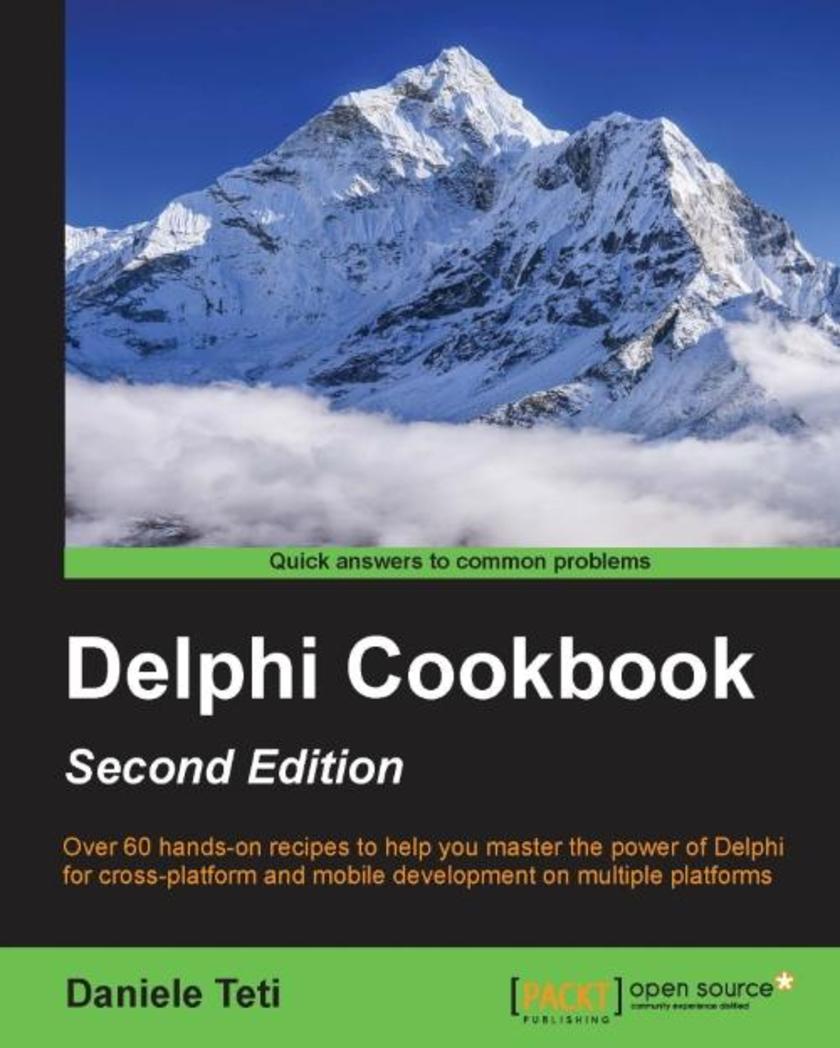
Delphi Cookbook - Second Edition
¥90.46
Over 60 hands-on recipes to help you master the power of Delphi for cross-platform and mobile development on multiple platforms About This Book Get to grips with Delphi to build and deploy various cross-platform applications Design, develop, and deploy real-world applications by implementing a single source codebase This swift guide will increase your productivity to develop applications with Delphi Who This Book Is For If you are an intermediate developer with a basic knowledge of Delphi and you want to develop cross-platform applications, then this book is for you. Familiarity with the fundamentals of RAD (Rapid Application Development) Studio is expected. What You Will Learn Develop visually stunning applications using FireMonkey Deploy LiveBinding effectively with the right OOP approach Create server-side programs to serve RESTful web services and provide data to your mobile apps Use well-defined GUI design patterns to build mobile applications that provide a great user experience Build mobile apps that read data from a remote server efficiently Call the platform native API on Android and iOS even for an unpublished API Manage software customization for your customer by making better use of an extended RTTI Implement the most popular design pattern without wasting too much time on debugging and bug fixing In Detail Delphi is a cross-platform Integrated Development Environment (IDE) that supports rapid application development for Microsoft Windows, Apple Mac OS X, Google Android, and Apple iOS. It helps you to concentrate on the real business and save yourself the pain of wandering amid GUI widget details, or having to tackle inter-platform incompatibilities. It also has a wide range of drag-and-drop controls, helping you code your business logic into your business model, and it compiles natively for desktop and mobile platforms. This book will teach you how to design and develop applications, deploy them on the cloud platform, and distribute them within an organization via Google Play and other similar platforms. You will begin with the basics of Delphi and get acquainted with JSON format strings, XSLT transformations, unicode encodings and various types of streams. We then move on to more advanced topics such as developing higher-order functions and using enumerators and RTTI. You will get an understanding of how Delphi RTL functions and how to use FireMonkey in a VCL application. We will then cover topics such as multithreading, using the parallel programming library and putting Delphi on a server. We will also take a look at the new feature of WebBroker Apache modules and then ride the mobile revolution with FireMonkey. By the end of the book, you will be able to develop and deploy cross-platform applications using Delphi. Style and approach Delphi Cookbook is an easy-to-follow guide, rich with hands-on examples of real-world programming tasks in Delphi.

Asynchronous Android Programming - Second Edition
¥90.46
Unlock the power of multi-core mobile devices to build responsive and reactive Android applications About This Book Construct scalable and performant applications to take advantage of multi-thread asynchronous techniques Explore the high-level Android asynchronous constructs available on the Android SDK Choose the most appropriate asynchronous technique to implement your next outstanding feature Who This Book Is For This book is for Android developers who want to learn how to build multithreaded and reliable Android applications using high-level and advanced asynchronous techniques and concepts. No prior knowledge of concurrent and asynchronous programming is required. This book will also be great for Java experts who are new to Android. Whether you are a beginner at Android development or a seasoned Android programmer, this book will guide you through the most basic and advanced asynchronous constructs used in Android programming. What You Will Learn Get familiar with the android process model and low-level concurrent constructs delivered by the Android SDK Use AsyncTask and loader framework to load data in the background, delivering progress results in the meantime Create services that interact with your activity without compromising the UI rendering Learn the working of Android concurrency on the Native Layer Interact with nearby devices over Bluetooth and WiFi communications channels Create and compose tasks with RxJava to execute complex asynchronous work in a predictable way Get accustomed to the use of the Android Loader construct to deliver up-to-date results In Detail Asynchronous programming has acquired immense importance in Android programming, especially when we want to make use of the number of independent processing units (cores) available on the most recent Android devices. With this guide in your hands you’ll be able to bring the power of Asynchronous programming to your own projects, and make your Android apps more powerful than ever before! To start with, we will discuss the details of the Android Process model and the Java Low Level Concurrent Framework, delivered by Android SDK. We will also guide you through the high-level Android-specific constructs available on the SDK: Handler, AsyncTask, and Loader. Next, we will discuss the creation of IntentServices, Bound Services and External Services, which can run in the background even when the user is not interacting with it. You will also discover AlarmManager and JobScheduler APIs, which are used to schedule and defer work without sacrificing the battery life. In a more advanced phase, you will create background tasks that are able to execute CPU-intensive tasks in a native code-making use of the Android NDK. You will be then guided through the process of interacting with remote services asynchronously using the HTTP protocol or Google GCM Platform. Using the EventBus library, we will also show how to use the Publish-Subscribe software pattern to simplify communication between the different Android application components by decoupling the event producer from event consumer. Finally, we will introduce RxJava, a popular asynchronous Java framework used to compose work in a concise and reactive way. Asynchronous Android will help you to build well-behaved applications with smooth responsive user interfaces that delight the users with speedy results and data that’s always fresh. Style and approach This easy-to-follow guide is full of code examples of real-world use cases. Each asynchronous topic is explained sequentially, from the most basic and low-level to the more advanced, using concise and effective language. Some lifecycle flows and concepts feature illustrations to help you understand the complex interactions between Android entities.
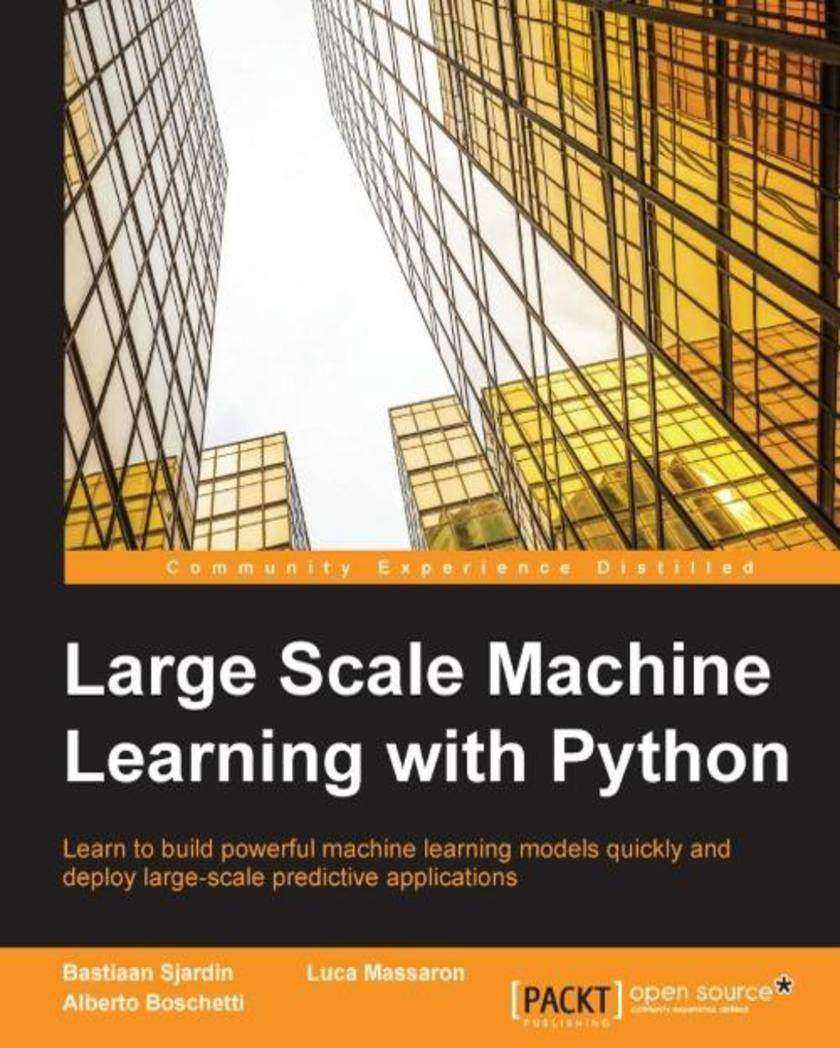
Large Scale Machine Learning with Python
¥90.46
Learn to build powerful machine learning models quickly and deploy large-scale predictive applications About This Book Design, engineer and deploy scalable machine learning solutions with the power of Python Take command of Hadoop and Spark with Python for effective machine learning on a map reduce framework Build state-of-the-art models and develop personalized recommendations to perform machine learning at scale Who This Book Is For This book is for anyone who intends to work with large and complex data sets. Familiarity with basic Python and machine learning concepts is recommended. Working knowledge in statistics and computational mathematics would also be helpful. What You Will Learn Apply the most scalable machine learning algorithms Work with modern state-of-the-art large-scale machine learning techniques Increase predictive accuracy with deep learning and scalable data-handling techniques Improve your work by combining the MapReduce framework with Spark Build powerful ensembles at scale Use data streams to train linear and non-linear predictive models from extremely large datasets using a single machine In Detail Large Python machine learning projects involve new problems associated with specialized machine learning architectures and designs that many data scientists have yet to tackle. But finding algorithms and designing and building platforms that deal with large sets of data is a growing need. Data scientists have to manage and maintain increasingly complex data projects, and with the rise of big data comes an increasing demand for computational and algorithmic efficiency. Large Scale Machine Learning with Python uncovers a new wave of machine learning algorithms that meet scalability demands together with a high predictive accuracy. Dive into scalable machine learning and the three forms of scalability. Speed up algorithms that can be used on a desktop computer with tips on parallelization and memory allocation. Get to grips with new algorithms that are specifically designed for large projects and can handle bigger files, and learn about machine learning in big data environments. We will also cover the most effective machine learning techniques on a map reduce framework in Hadoop and Spark in Python. Style and approach This efficient and practical title is stuffed full of the techniques, tips and tools you need to ensure your large scale Python machine learning runs swiftly and seamlessly. Large-scale machine learning tackles a different issue to what is currently on the market. Those working with Hadoop clusters and in data intensive environments can now learn effective ways of building powerful machine learning models from prototype to production. This book is written in a style that programmers from other languages (R, Julia, Java, Matlab) can follow.
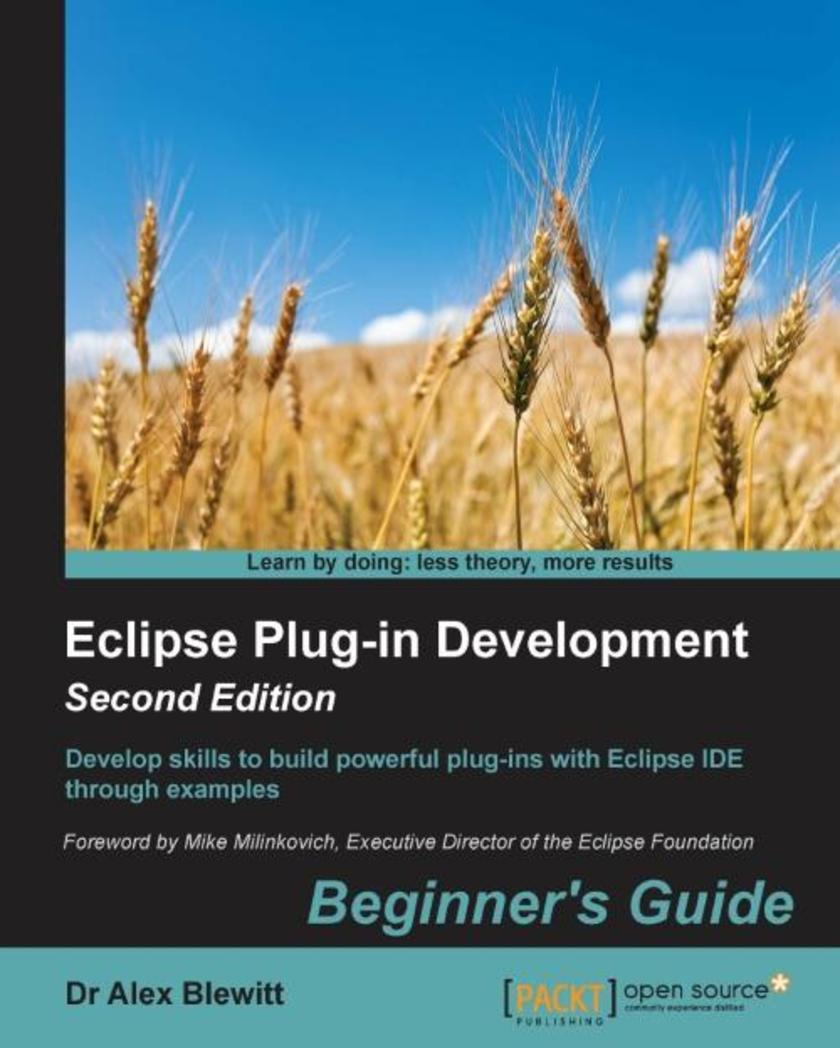
Eclipse Plug-in Development: Beginner's Guide - Second Edition
¥90.46
Develop skills to build powerful plug-ins with Eclipse IDE through examples About This Book Create useful plug-ins to make Eclipse work for you Learn how to migrate Eclipse 3.x plug-ins to Eclipse 4.x From automation to testing, find out how to get your IDE performing at an impressive standard Who This Book Is For This book is for Java developers familiar with Eclipse who need more from the IDE. This book will sharpen your confidence and make you a more productive developer with a tool that supports rather than limits you. What You Will Learn Create plug-ins for Eclipse 4.x Test plug-ins automatically with JUnit Display tree and table information in views Upgrade Eclipse 3.x plug-ins to Eclipse 4.x Find out how to build user interfaces from SWT and JFace Run tasks in the background and update the user interface asynchronously Automate builds of plug-ins and features Automate user interface tests with SWTBot In Detail Eclipse is used by everyone from indie devs to NASA engineers. Its popularity is underpinned by its impressive plug-in ecosystem, which allows it to be extended to meet the needs of whoever is using it. This book shows you how to take full advantage of the Eclipse IDE by building your own useful plug-ins from start to finish. Taking you through the complete process of plug-in development, from packaging to automated testing and deployment, this book is a direct route to quicker, cleaner Java development. It may be for beginners, but we're confident that you'll develop new skills quickly. Pretty soon you'll feel like an expert, in complete control of your IDE. Don't let Eclipse define you - extend it with the plug-ins you need today for smarter, happier, and more effective development. Style and approach Packed with plenty of examples so you're never stuck, or never left simply reading instructions, this book encourages you to get started immediately. This book is for developers who want to develop, not just learn.




 购物车
购物车 个人中心
个人中心



